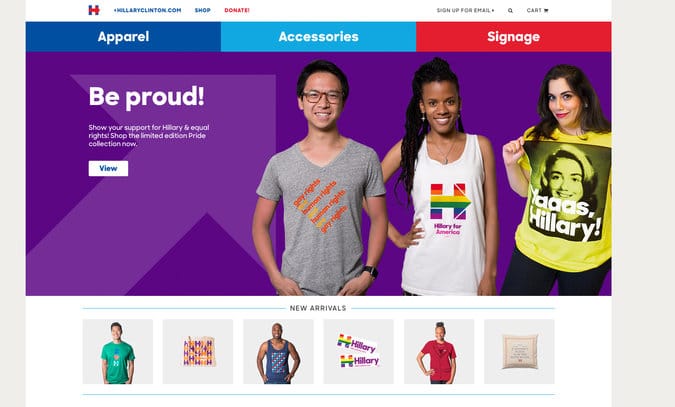CBS NEWS | June 25, 2015, 7:01 AM
Candidates get more now from having their name slapped on products than ever before. This election season, the cash and your information are making the honey pot of swag more enticing, reports CBS News correspondent Julianna Goldman.
There is already an online arsenal of goods attracting supporters and their cash. You’ve got “Marco Polos” for Marco Rubio, “Cruzies” for Ted Cruz, a filibuster starter kit for Rand Paul and a “future voter” onesie for sale on Hillary Clinton’sstore for $25.
“We want to engage people any way we can,” Clinton’s communications director Jennifer Palmieri said, adding that these days, merchandise is a must. It’s a way to have fun, but the kitschy pant-suit, t-shirts and needlepoint pillows also spell big-time cash.
“We are able to make money from it, too, for the campaign, which is important, but mostly it’s a way for people to show their support, but to do it in a creative way,” Palmieri said.
When you buy campaign gear, you’re making a campaign donation.
In 2008, the Obama campaign revolutionized the practice. They made each purchase a 100 percent donation to the campaign. In 2012, they perfected it into a money-making machine with merchandise hauling in tens of millions of dollars.
Meaghan Burdick was the campaign’s director of marketing and merchandising. She said those sales brought them just about $40 million.
“It’s amazing to think about how much we made off of merchandise,” she said.
Obama gear showed them the money — and something else that was just as important — a treasure trove of voter information.
“We would learn a lot of information about their shopping habits and, that way, that would kind of tell us then more about demographics and what people in that demographic and that area are like,” Burdick said.
Republicans took note after 2012. Mitt Romney’s campaign launched its store late and only raked in $15 million in sales.
“In this day and age, you have to have a robust store,” Republican National Committee spokesman Sean Spicer said.
He said GOP merchandise has been a bit stale, but his party is catching up quickly.
“You’re not just buying any shirt, you’re helping us sell a message, you’re providing data and you’re getting people hopefully more excited about the campaign,” Spicer said.
But sometimes going too cool can land a candidate in hot water. When CBS News found out Paul Ray-Bans were made without the company’s approval, the campaign pulled them after a very public cease and desist. But even a faux pas like that, Spicer said, can make a candidate money.
“Just exposure of the items sometimes brings in additional revenue,” he said.
And that public relations boost counts for attack swag, too, evolving from items like popular John Kerry flip flops — which hit the candidate’s record in 2004 — to a more high-tech jab, with Hillary’s Hard Drive in Paul’s store which promises “100 percent genuine erased clean email server.”
Cruz’s campaign is playing it a little straighter, slapping the brand on t-shirts, hats and iPhone cases, a helpful assist to any candidate who might be short on name recognition.
“That voter is not only going to wear that brand, they’re going to promote Ted Cruz to their friends, their family, and their co-workers,” Cruz campaign spokesman Rick Tyler said.
Campaigns are also getting smart with their sourcing. Some Cruz merchandise comes from red states like Utah and Georgia. Their “Cruzie” is even from his home state of Texas, while the Clinton campaign advertises that it supports woman and minority-owned American companies, and the glassware all comes from the very important state of Iowa.
Original Source: http://www.cbsnews.com/news/2016-candidates-cash-retail-politics-selling-merchandise-online/










